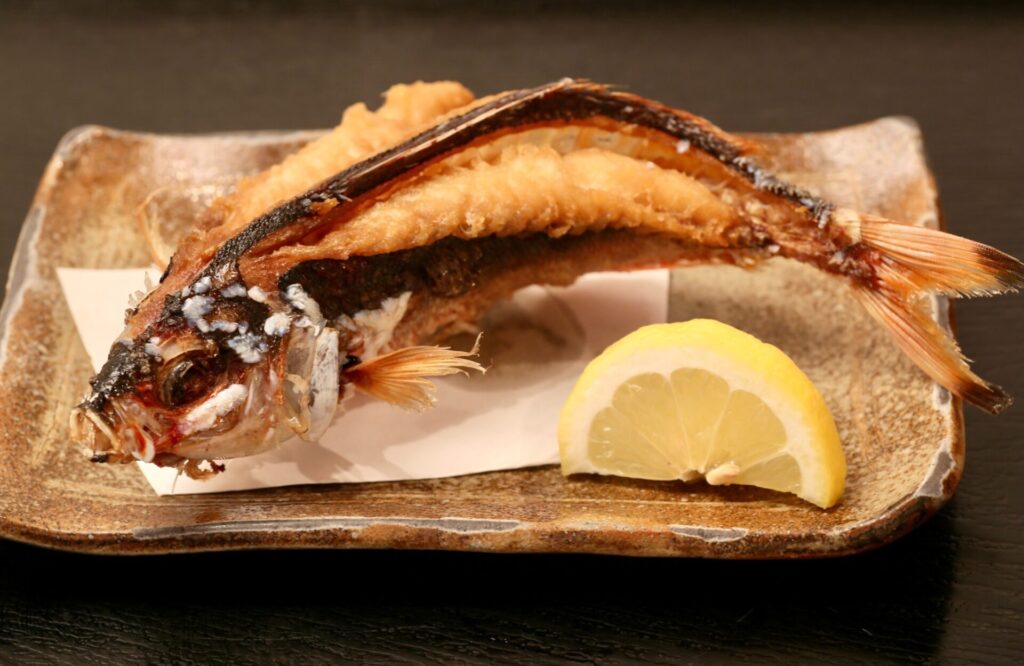Gurukun

There has long been a widespread and heavily biased perspective, a preconceived idea that says, “Okinawan fish dishes are terrible.”
The reason for this may well be that the fish inhabiting the coastal waters of Okinawa look different from those of mainland Japan. Their shapes and vivid colors can appear strange and leave a strong first impression. Upon seeing the fish displayed at the public market in Naha, many people would immediately reject them, assuming they are just the colorful fish seen when diving at the local coral reefs.
I used to be one of those people. I had tried goat and pork dishes without hesitation but never considered ordering any fish dishes or sashimi1.
However, as I visited Okinawa more and more, I had the chance to try sashimi and clear soups of irabuchā2 and mībai3, as well as sukugarasu4. At that time, they seemed okay to me. The decisive moment came when I wrote a story on the agiyah (a fishing technique) of gurukun, the official prefectural fish of Okinawa.
Living around coral reefs, gurukun is the only fish that can be caught in large quantities in Okinawa, making it a popular target for the prefecture’s fishing industry. When I joined an agiyah fishing expedition in Ishigaki, most of the gurukun caught were of the kabukuwā (double-lined fusilier) or ukū (bartail fusilier) variety. Among the eight types of gurukun in Okinawan waters, the most common type is about 30 centimeters long, with a vivid turquoise upper body, reddish lower body, and long pectoral fins. Their bodies sparkle as if they were sprinkled with gold and silver powder.
I still had a biased point of view, so I would secretly groan at the sight of their vivid colors, but when the uminchu (fishers) skillfully prepared the fish onboard as sashimi, I was surprised by how good it was. The taste was light and gentle, not unlike the softer type of mullet. The soy sauce was mixed with garlic powder, which is quite uncommon, but to my surprise, it went quite well with the simple, fresh gurukun.

Upon my return to Ishigaki city, I tried some of the gurukun dishes that the locals were enjoying, such as fried gurukun and broiled gurukun.
They were delicious; especially the freshly fried gurukun. The smooth, white flesh was still hot and went perfectly with an ice-cold Orion beer. I heard that most gurukun are consumed in Okinawa, as it is unpopular and difficult to sell in other parts of Japan. This may come down to people’s biased perspectives. If that is the case, those preconceived ideas are playing a role in protecting this local delicacy. Perhaps a biased perspective can in fact nurture something valuable…?
Editor’s Note:
- A dish of sliced raw seafood or meat.
- Knobsnout parrotfish.
- Groupers from local waters.
- Young little spinefoot pickled in salt.









































































































































































































































